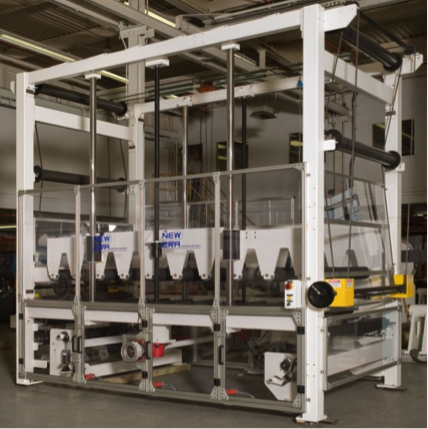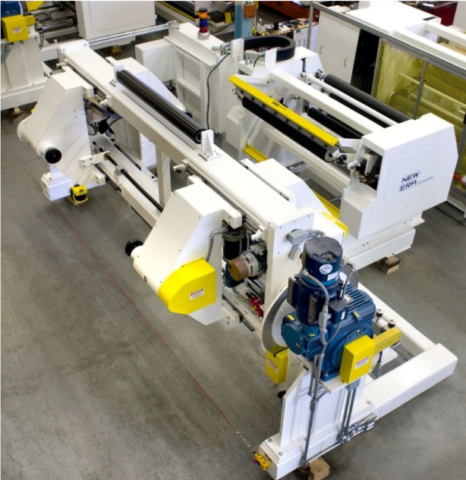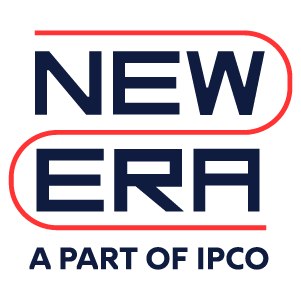The following is the fifth and final part in a series of 5 blogs that have gone through a presentation given by New Era Converting Machinery’s Bob Pasquale at 2018 AIMCAL R2R Europe Conference. The presentation is titled “Selecting an Unwind and Unwind Splicer System.”
Part 1 offered an overview and introduction to the blog series, as well as the holding of the roll while unwinding. Part 2 discussed tension control of the unwinding material. Part 3 went through the guiding of the web as it exits the unwind and how the expiring roll’s web will be spliced to the beginning of the new roll’s web. Part 4 continued with a consideration of how the expiring roll’s web will be cut and the number of unwind positions. Part 5 will wrap the series up, finishing with a comparison of roll to roll versus continuous unwinding, and then offer a brief Conclusion.
ROLL TO ROLL VS. CONTINUOUS UNWINDING
For many operations it is not practical to stop the process line for splicing. In these applications the unwind system is designed to allow for the continuous feeding of web to the process by one of two methods:
- allowing for the web to be fed to the process continuously while the unwind is stopped
- providing a system that allows for the splicing of the new web to the old without stopping the unwind
Allowing for the web to be fed to the process continuously while the unwind is stopped:

Here a section such as a “J” box, conveyor or web accumulator is incorporated into the process line. This section is designed so excess web can been stored in it for feeding to the process while the unwind is stopped for splicing.
Advantages:
- Allows for continuous operation of the process while splices are being made at the unwind. Particularly useful when time consuming splices such as sewn or welded ones need to be made without stopping the process
Disadvantages:
- Takes up floor space
- May require a significant number of rolls to contact the web, creating scratches, static, stretching, etc.
- Does not work well with high speed operations where significant storage time is required
Providing a system that allows for the splicing of the new web to the old without stopping the unwind:

Here the unwind is designed to allow for splicing of the leading end of the new roll to the tail end of the expiring roll without stopping the unwind. This type of system can take one of several forms but most typically features a turret unwind with an automatic splicing and cutting system.
Advantages:
- Allows for the automatic splicing of new rolls at high speeds with minimal operator intervention
Disadvantages:
- Limited to lap type splices
- Only applies to splices that are performed using tapes or adhesives
CONCLUSION
There are many different design considerations and decisions that need to be made when matching an unwind to a web process. Care needs to be taken to assure that the system is designed to maximize the operation of the process.
###
*That concludes the final part of our 5 part blog series, “Selecting an Unwind and Unwind Splicer System.” If you missed them, go back and read part 1 here, part 2 here, part 3 here, and part 4 here! Thanks for reading, and check back soon for our next blog series!













 Downloadable Brochures in PDF Format
Downloadable Brochures in PDF Format